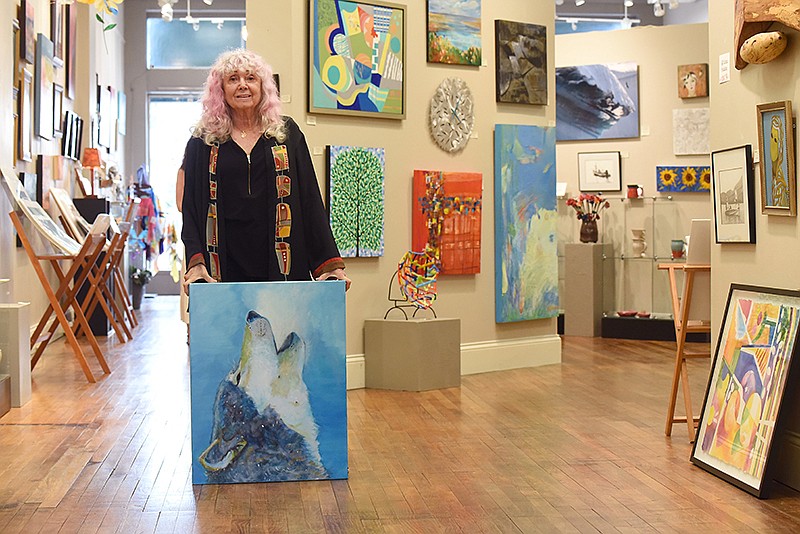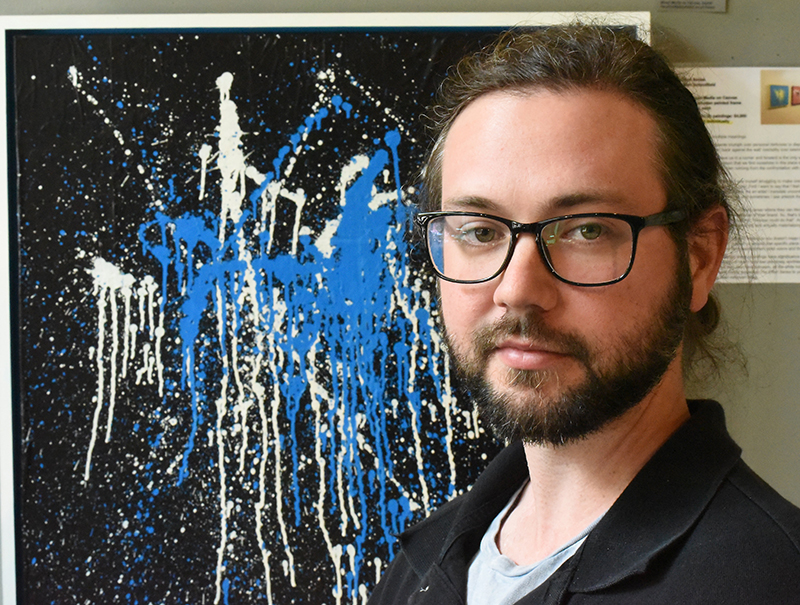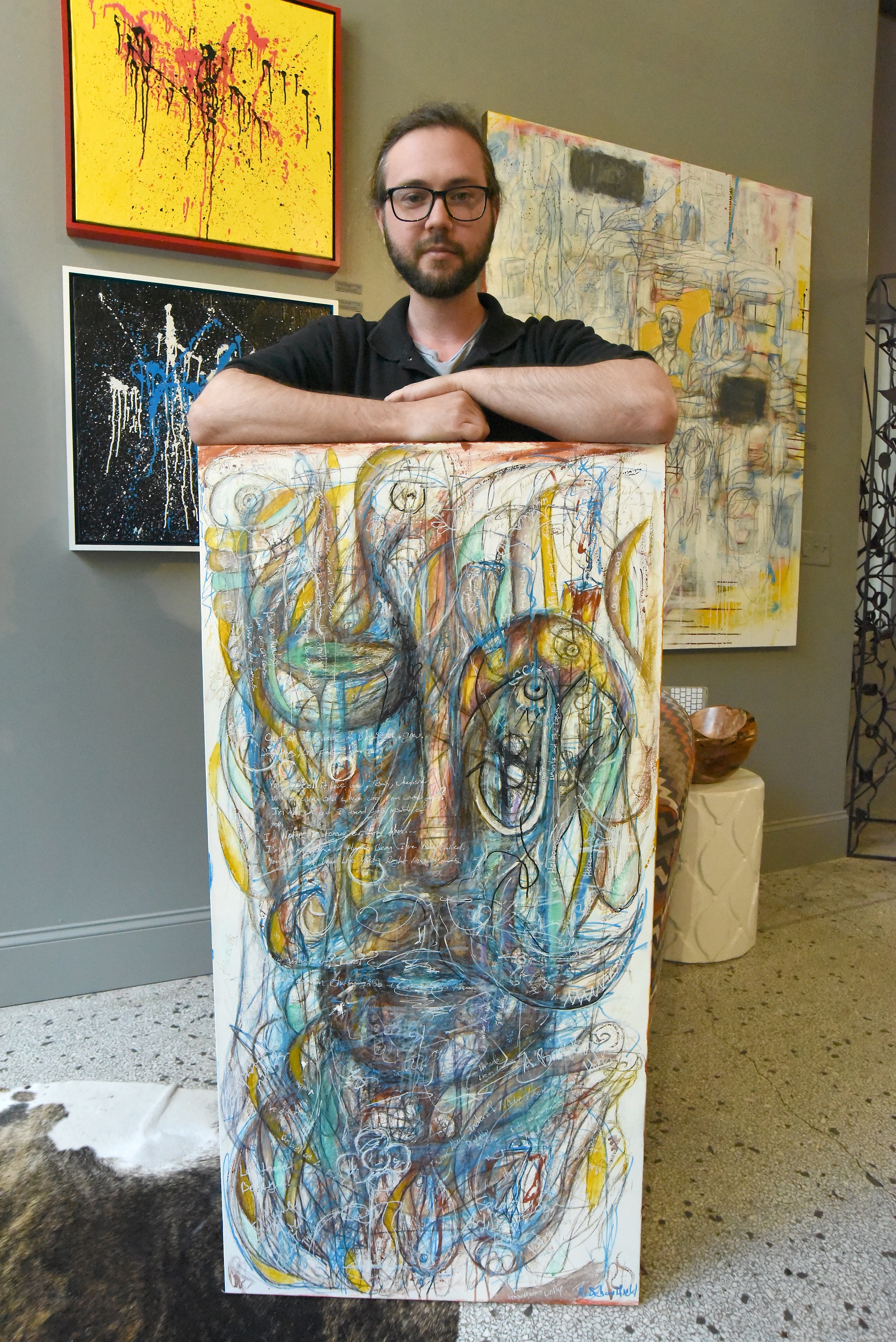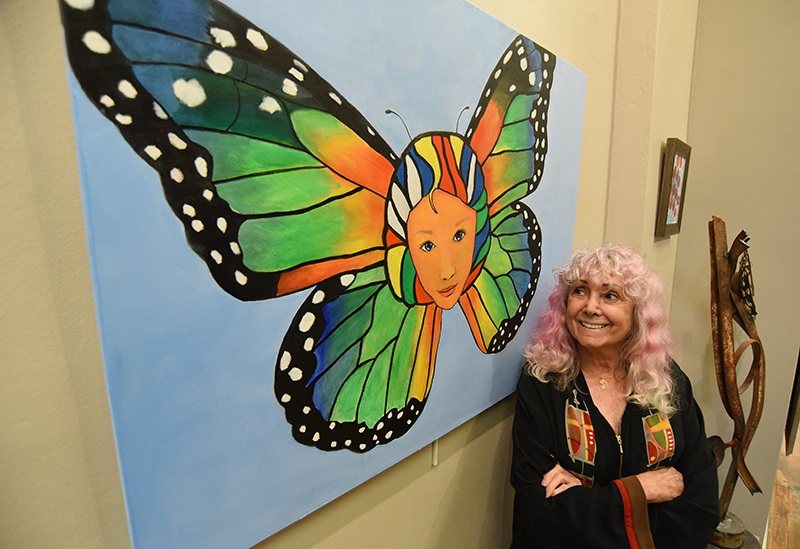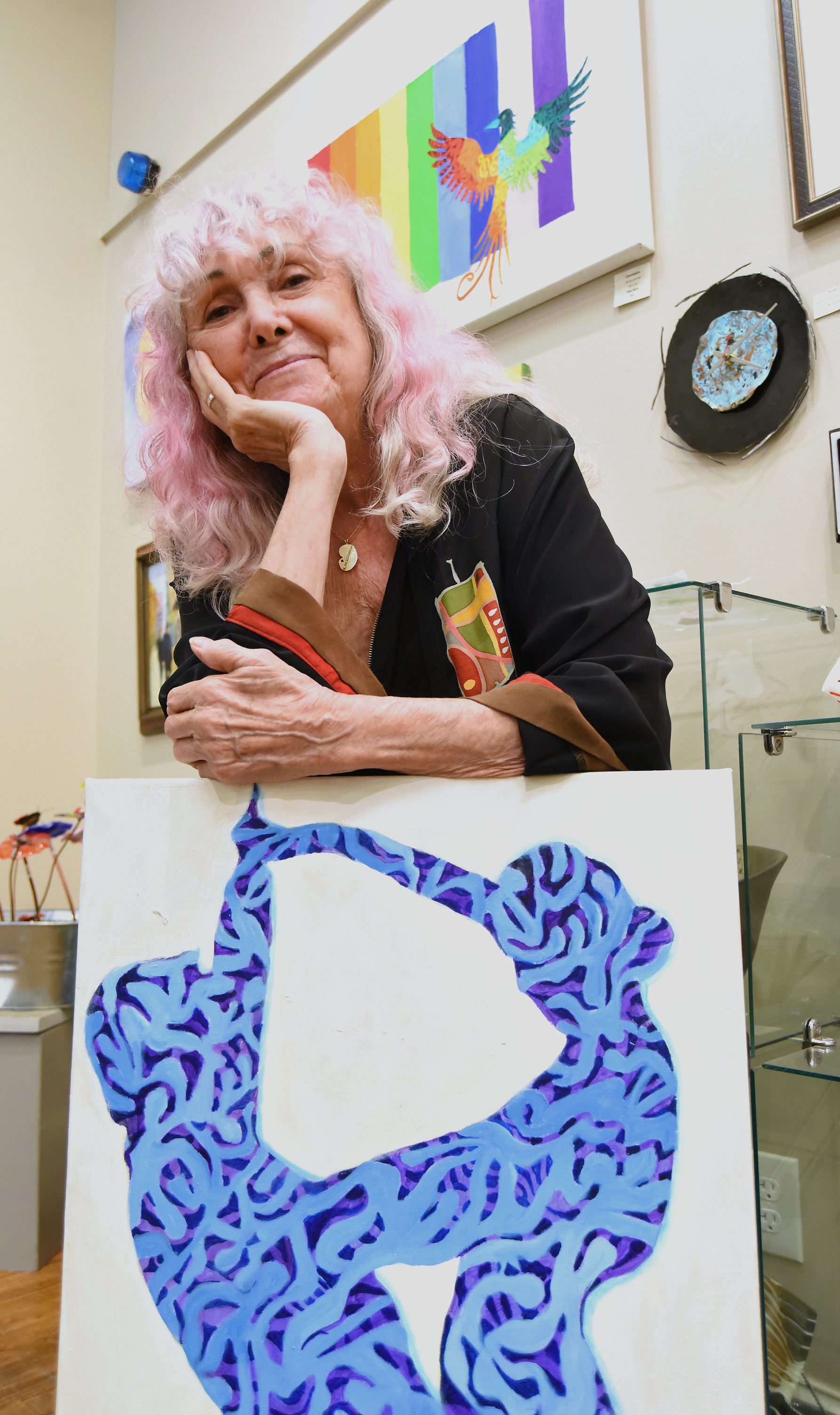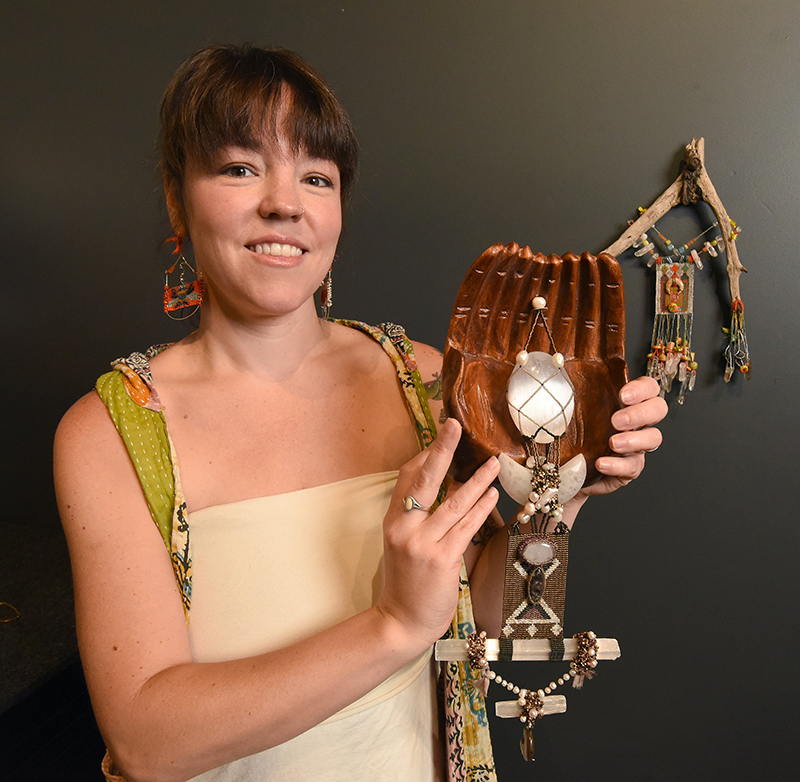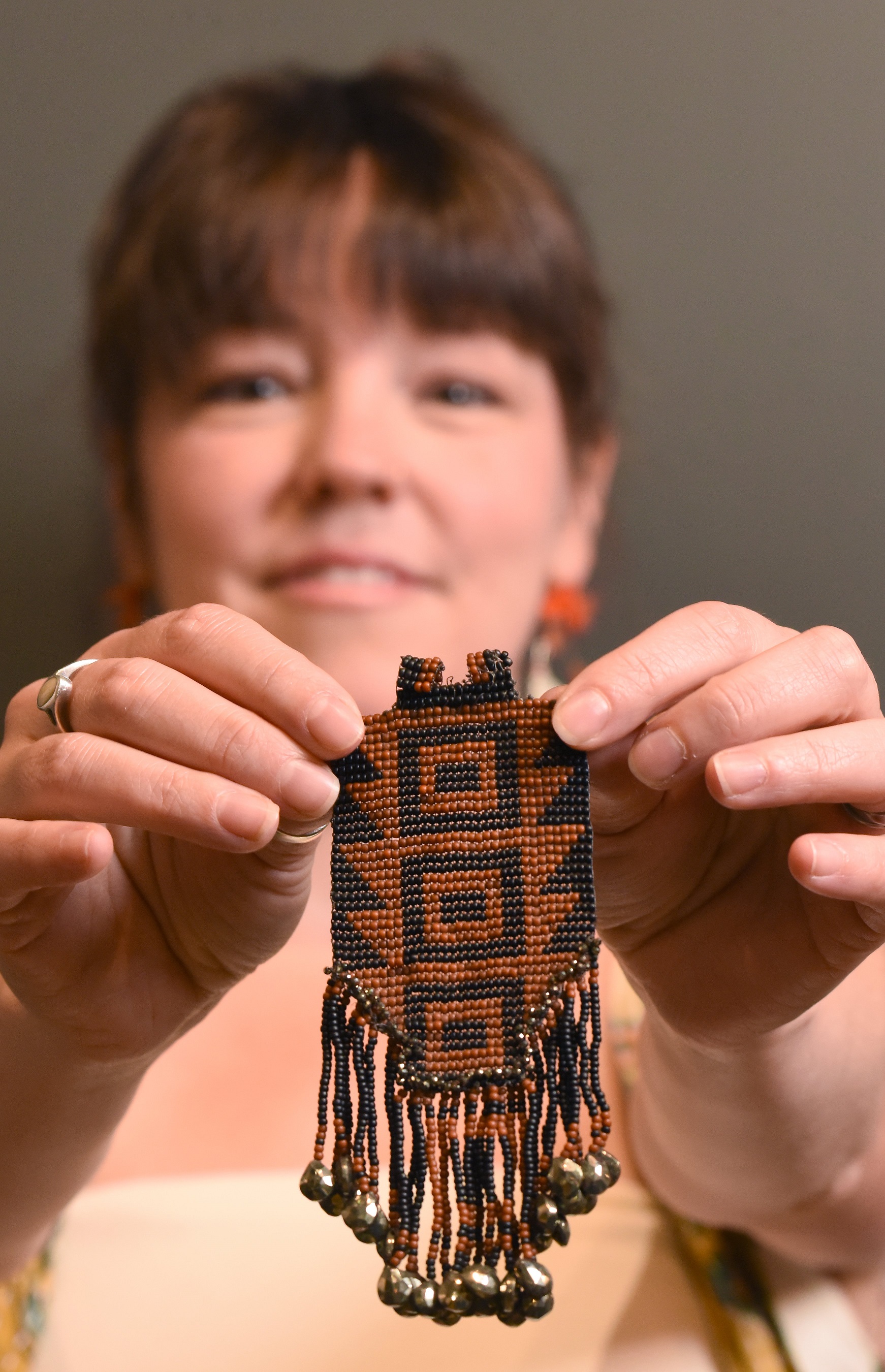The late American artist and PBS television host Bob Ross once said, "We (artists) don't make mistakes, just happy little accidents."
Indeed, when Chatter asked Chattanooga area artists if they had learned as much from their mistakes as from their successes, several answered with a resounding "yes." The key is to earn a livelihood, and it takes trial and error to figure out what sells, they said.
James Tucker, a 73-year-old painter who lives in Sewanee, Tennessee, calls his unsuccessful artworks "fruitful failures."
"Of course you will fail quite often," says Tucker, who shows his work at In-Town Gallery on Frazier Avenue in Chattanooga. "No big deal; the waste basket is your friend ... No one is going to die if I botch a day's work."
The key to success for an artist is to work consistently, he says, and "to not worry too much about progress or achievement ... If you have the humility to learn your craft and the perseverance to work at it, those things will come, though there are many days when that doesn't seem possible."
Judy Jones, 71, of Signal Mountain, makes artworks from plaster (like the kind you buy at the hardware store to patch walls). She says working with plaster requires patience and strong arms - it comes in 25-pound bags. Some of her earliest works failed, she says, but they helped her build a foundation of knowledge for successes to come.
"Several of these first pieces are in the back of a closet and may never see the light of day again," says Jones, who also shows work at In-Town Gallery. "But they were necessary to show me how to work with and manipulate the plaster."
Jeff Delude, of Ellijay, Georgia, who shows his work at Area 61 gallery on Broad Street, says that a few years ago he tried painting, only to realize that it wasn't his medium. "The paintings were not bad or anything, but I just became rather bored with the endeavor," he says. "It felt too much like work. My remedy was to put the paint and brushes away and pull out my scissors and rubber cement. I fell right back into my 'happy zone' of free-association, surrealist collage, and I have not looked back since."
Janet Campbell Bradley, 57, of Brainerd, has been a jewelry artist for 25 years and recently transitioned to printmaking and abstract artwork. She also shows her work at Area 61.
"No matter how much skill or experience you have with any medium, there will be times a piece simply does not work for you," she says. "It's not uncommon for artists to completely paint over a piece that didn't turn out, or to put it aside and revisit it later when the mind is more open."
On rejection, she says, "If you can't deal with rejection you'll have a difficult time becoming successful at what you do."
Here, in their own words, three local artists share stories about the mistakes they encountered on their paths to success. (Their responses have been edited for length.)
Robert Schoolfield
Age: 31
Residence: Lee Highway area
Gallery: Area 61, 721 Broad St., Suite 100 (inside The Maclellan Building)
Website: schoolfieldart.com
Background
I primarily make mixed-media artwork. Basically, I use materials that interest me, or any written documents from my personal life, and I use them to tell a story. I then paint and draw, and I repetitively do that I until I like what I see. I get out of the way and let the pen do all of the art.
How have you honed your artistic process?
I would say that most of my pieces are a surprise. Knowing that great things can happen on accident, I take the approach that if I put my time into something, that it will turn out good. Sometimes I like to consider myself a doorway for creativity to walk through. It could all potentially be something from beyond myself.
What have you learned from pieces that didn't work?
It was somewhat disheartening at first, and then I got over it because I know that what I do is good. We're all different and we like different things, and liking or not liking a piece of art is subjective. I guess what I look for is originality and style, and if I feel a connection to it. Some people play cover songs and some people write original music.
Any broader life lessons?
Don't compare yourself to others. The success, or lack of, from other artists is none of your business. Focus on how to be a better you.
... There is one consensual recipe for success in all areas of life, and that is hard work. Work harder than your yesterday's self, and never stop.
Bottom line
Anything that happens in my life is fuel for creativity. You can only get so much from reading a book. Sometimes you gotta live a little to learn and gain experience.
Miki Boni
Age: "Ageless"
Residence: Southside
Gallery: In-Town Gallery, 26A Frazier Ave.
Website: mikiboni.com
Background
I received my [Master of Fine Arts] in Mexico, where I also taught painting and life drawing. That country's surrealism inspired my direction, working mainly as a painter in oils for the past 30 years. I've also found myself drawn to sculpture. I love the kinesthetics of the clay, although I am recognized as a career painter.
What's been one of your greatest mistakes as an artist?
When I think of sculpture, I remember being thoroughly into work on a clay figure. I was so happy with how it was evolving, I decided to shoot a photo of it in progress. After the shot, I turned and my elbow knocked it over, breaking off her entire left arm just under her shoulder and her right hand above the wrist. I had worked so hard on her hands and was totally heartbroken.
Someone nearby came over to comfort me and said, "Just change the story." Well, that advice changed my creative life. My original idea went out the window and I began re-creating the sculpture that would eventually become "She's Got a Mean Left Hook." A boxing glove hid her broken right hand, and a chain with a hook at the end gave it the title.
This is a perfect example of how we can never be attached to an outcome. The process evolves and we ultimately can be surprised at how it will complete itself. That's the joy of the creative process and thinking outside the box. It's what brings me back to my studio time and again.
Do you believe in mistakes?
There are no mistakes, only lessons. And that goes for rejection - and we all hate that word. However, when a piece of work is not chosen for an exhibit, for example, ask why. The answer becomes your teacher.
Bottom line
Be patient, curious about everything, and open to it all. Let your imagination be your muse.
Name: Katie Rogers
Age: 34
Residence: North Chattanooga
Gallery: Area 61, 721 Broad St., Suite 100 (inside The Maclellan Building)
Website: ktribedesigns.com
Background
I have been a beaded jewelry/beadwork artist since I bought my first box of vintage glass beads when I was 12. It has evolved and changed a lot since those first few stretchy bracelets ... I received a fine-art degree from UTC ... It is definitely a part-time (job) as I have two wild little girls that keep me pretty busy full time.
Is there a mistake that you learned from?
My first loom piece. I fell in love with the technique, but it was outside my comfort zone. I was used to instant gratification; my big, chunky stones filling a necklace was simple and quick. The loom is meticulous, time consuming and craftsmanship is very important (was never the strongest aspect of my work throughout my college years), but I loved its repetitive nature and the rich patterns/colors that I could create. My first loom piece was full of imperfections: crooked beads, pattern mishaps, and the finish was straight-up ugly. But I felt inspired to improve my technique and learn.
Do artists learn from rejection?
Absolutely! ... Probably one of the hardest rejections was when I was asked to remove my work from my first gallery. I was a consistently selling artist, so I felt the drive to just produce work. However, I was so focused on quantity that the quality was being affected. I had lost touch with making each piece tell a story and connecting to the materials. It turned out to be a great lesson. I took a break, did research, made connections with individuals that mined and sold high-quality stones and beads, then started creating work with passion again. Although the situation stung like heck, I was able to come back with higher-quality work that I was passionate about and proud to present.
How important is patience?
Super-important! Being an artist is not a constant and instant success kind of gig. Sometimes you may go months without a sale - sometimes longer. Sometimes you have periods of great success and achievements. It is a roller coaster, for sure ... Keep finding happiness and love for what you do. It comes through in your work and people will see it.
Bottom line
Take the opportunity to grow and learn from your mistakes and failures. The failures can be just as important to your work as the triumphs. Continue to seek inspiration and technique. Take classes, read books, skim Pinterest/Instagram, go to shows and galleries, walk in nature. Creative fuel is everywhere. Listen to your instincts involving your work and direction. Be true to yourself.
